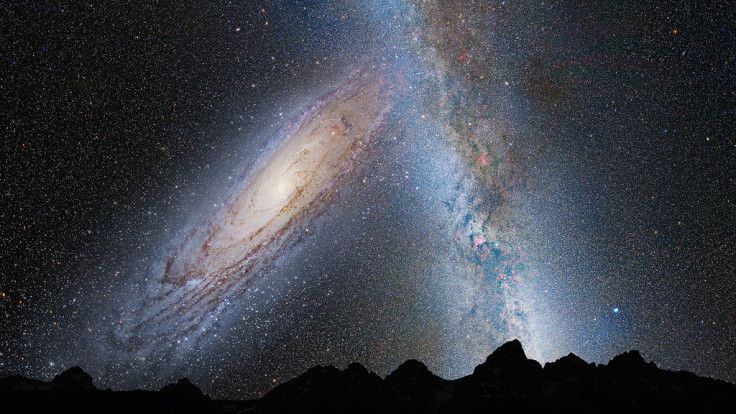Massive Andromeda Galaxy Explosion is False Alarm

A huge explosion suspected of being caused by two stars colliding in our nearest neighbouting galaxy has been described as a "false alarm" by Nasa.
Enthusiastic followers of astronomy thought Nasa's Swift satellite detected a burst of high-energy gamma rays coming from the Andromeda galaxy. The explosion was so powerful that if it happened in our galaxy, life on Earth would end.
But after much hype on social media, the Swift BAT (Burst Alert Telescope) team confirmed the unusual sighting was just a neutron star orbiting a normal star, which was shining brighter than normal due to faulty data analysis.
"Why it has been reported throughout the web as a GRB (gamma-ray burst) is something I can only speculate on, but Swift has been fabulously successful studying GRBs. Indeed it was ranked #1 by Nasa this month. I guess that enthusiastic followers of astronomy put two and two together and made five, unfortunately," wrote Phil Evans on star.le.ac.uk.
"I've even read people saying that there were loads of gamma rays from this object: there definitely weren't. In fact, the Swift-Bat Team said that 'this is a faint BAT transient'."
Kim Page at University of Leicester sent out this circular today to dismiss rumours there had been a gamma-ray Burst.
TITLE: GCN CIRCULAR
NUMBER: 16336
SUBJECT: Swift trigger 600114 is not an outbursting X-ray source
DATE: 14/05/28 07:57:12 GMT
FROM: Kim Page at U.of Leicester <klp5@leicester.ac.uk>
K.L. Page, P.A. Evans (U. Leicester), D.N. Burrows (PSU), V. D'Elia
(ASDC) and A. Maselli (INAF-IASFPA) report on behalf of the Swift-XRT team:
We have re-analysed the prompt XRT data on Swift trigger 600114 (GCN Circ. 16332), taking advantage of the event data.
The initial count rate given in GCN Circ. 16332 was based on raw data from the full field of view, without X-ray event detection, and therefore may have been affected by other sources in M31, as well as background hot pixels. Analysis of the event data (not fully available at the time of the initial circular) shows the count rate of the X-ray source identified in GCN Circ. 16332 to have been 0.065 +/- 0.012 count s^-1, consistent with the previous observations of this source [see the 1SXPS catalogue (Evans et al. 2014):
http://www.swift.ac.uk/1SXPS/1SXPS%20J004143.1%2B413420].
We therefore do not believe this source to be in outburst. Instead, it was a serendipitous constant source in the field of view of a BAT subthreshold trigger.
This circular is an official product of the Swift-XRT team.
Nasa's Swift Burst Alert Telescope watches the skies for gamma-ray bursts and observes around 90 events a year, but usually from further afield.
The initial alert prompted much excitement on Twitter, including from comedian Dara O'Briain.
Apparently 2 neutron stars may have just collided. And by “just" I mean 2 million years ago. We’re only hearing now. #GRBm31
— Dara Ó Briain (@daraobriain) May 28, 2014so #GRBm31 is not an astronomical explosion, but a challenge for the automated transient detection programs. bummer. http://t.co/b766xvAZMj
— ★ amanda bauer ★ (@astropixie) May 28, 2014@scienceface Unfortunately, the Swift XRT team has announced this to be a false alarm: http://t.co/e451KGMyVl. There never was a #GRBM31.
— Benjamin Knispel (@benknispel) May 28, 2014© Copyright IBTimes 2025. All rights reserved.






















